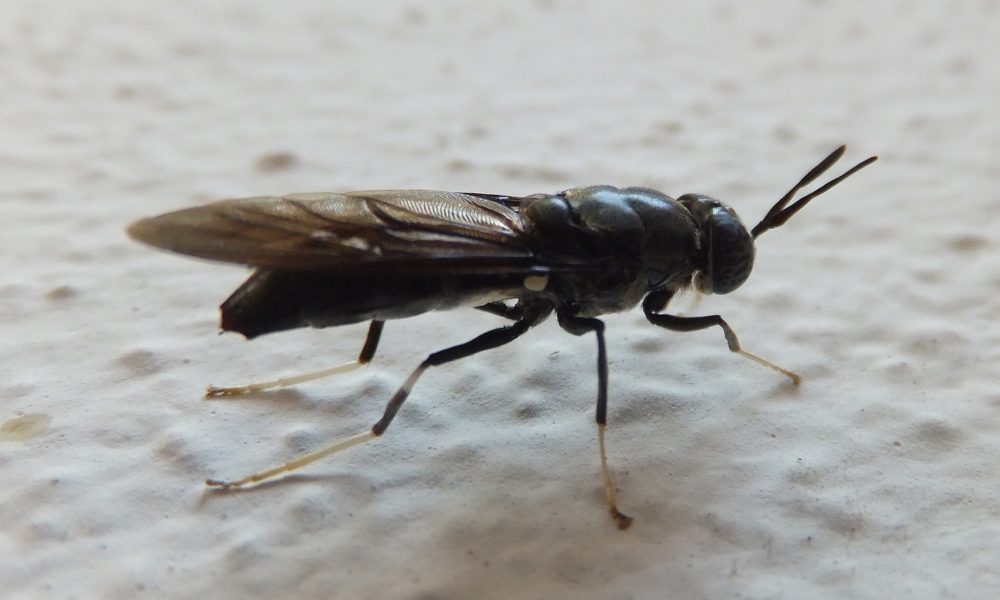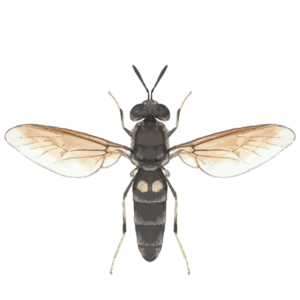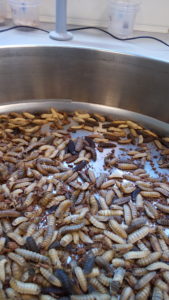
Turning Flies into Biodegradable Plastic
The plastic pollution problem is vast and harmful. But The Good Times has reported over the years on various solutions to help tackle the problem.
Here’s another remarkable effort: scientists have successfully found a natural product that can be transformed into degradable, digestible polymers (a substance or material, like plastics, that consists of very large molecules called macromolecules) and that thus decomposes in the environment. As opposed to plastic waste, which can take from 20 to as long as 500 years to decompose (although it never fully disappears, just getting smaller and smaller), this alternative material has been turned into biodegradable plastic. It’s the carcasses of dead black soldier flies.

Black Soldier Fly (Photo: DataBase Center for Life Science (DBCLS), CC BY 4.0)
That’s right: black soldier flies. This fly (Hermetia illucens), though originally native to the Americas, can now be found worldwide in tropical and temperate regions, where it is common and widespread. It has already proved its usefulness for recycling organic waste. The larvae feed on a large variety of organic material, including uneaten food, reducing the weight of the waste by half and at a faster pace than conventional composting methods. These flies consume organic waste up to four times their body weight per day, according to the United Nations Development Programme.
The black soldier fly is also edible. Its larvae contain proteins and other nourishing compounds so are cultivated widely as animal feed for their nutritional aspects. The international, peer-reviewed, food science journal, Foods, reported in 2017 that the fly is increasingly used commercially as a livestock feed ingredient because it is practical to rear, high yielding, and has rich nutritional value.
But regarding the black soldier fly’s capacity to be turned into biodegradable plastic: it’s the dead mature fly’s hard shell that the researchers have discovered can be used to make the new bioplastic. This insect’s carcass, the external skeleton that supports its body shape and protects its internal organs, contains chitin. This strong, abundant, and fibrous polymer is the major structural component in the exoskeletons of crustaceans, crabs and shrimps, as well as the cell walls of fungi.
As described on the online publishing platform Medium, the scientists used a process “involving the application of ethanol, acid, and bleach . . . to extract and purify this non-toxic, sugar-based polymer from the bugs to create a powder that they then turned into polycarbonates or polyurethanes [bioplastics], which are usually made from fossil fuel-based chemicals.”
These new plastics will not contribute to the plastic pollution problem.

Hermetia illucens larvae and prepupae (Photo: ShaunRomero, CC BY-SA 4.0 DEED)
In sum, the black soldier fly has a number of advantages. It is not an invasive species – it does not cause ecological, environmental, or economic damage. It does not bite or sting and is not known as a disease vector; it does not transfer diseases or parasites like mosquitoes or ticks do. Its larvae can eat almost any organic waste, including food waste, making it perfect for composting. The larvae reduce waste by up to 50% and do so more quickly than typical composting methods. What’s more, the nutritious larvae can serve as feed for fish, poultry, pigs, and even pets, such as dogs. They are rich in antimicrobial, medium-chain fatty acids, which have proven gut health benefits. In powdered form, they can be a very good source of protein for human consumption, replacing soybean meal and fish meal.
So it’s also very good news indeed that, in addition to all of that, dead adult black soldier fly carcasses can be turned into biodegradable plastic.

